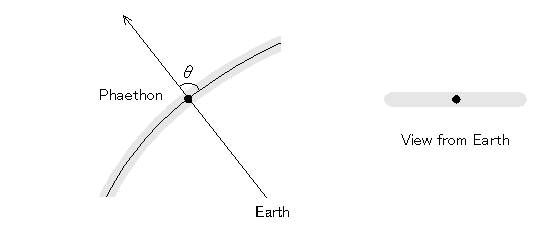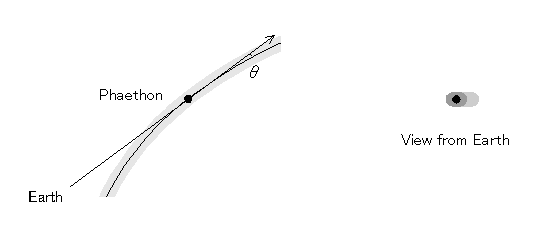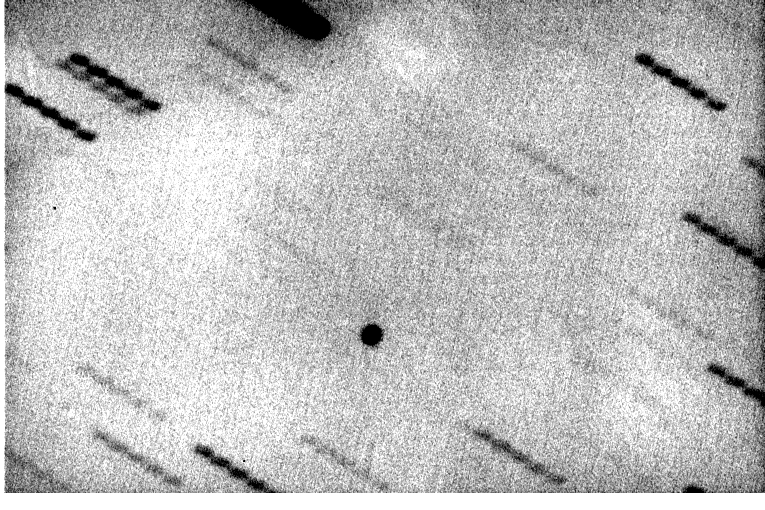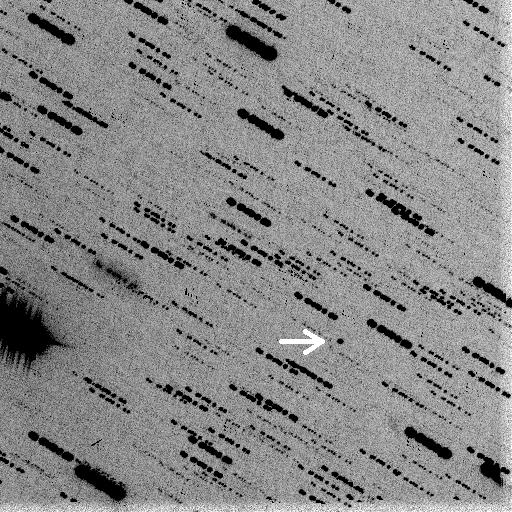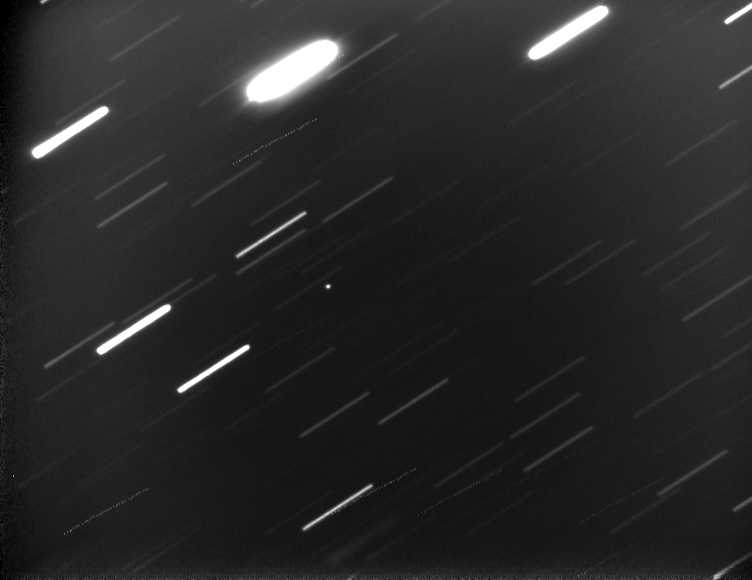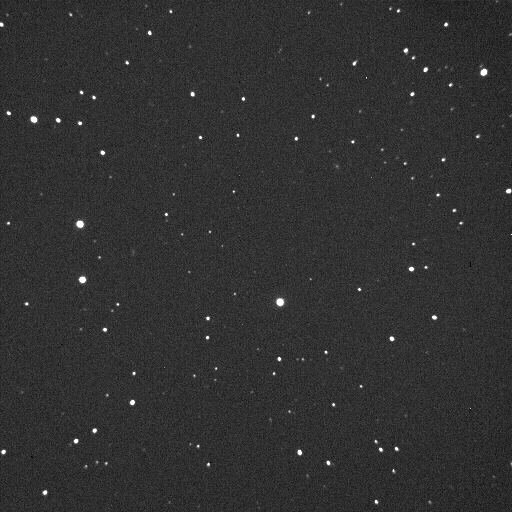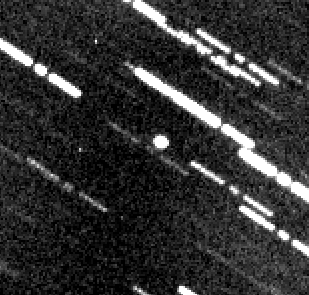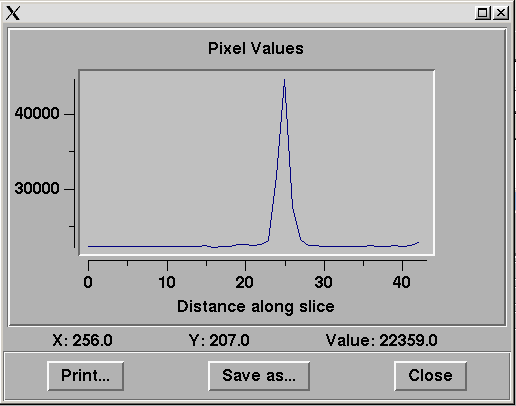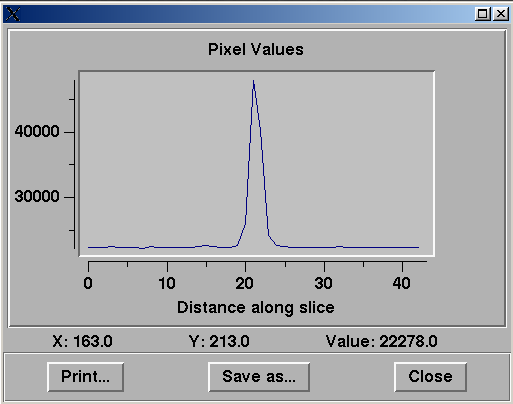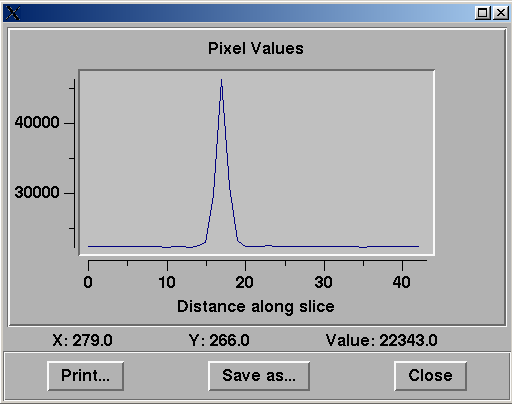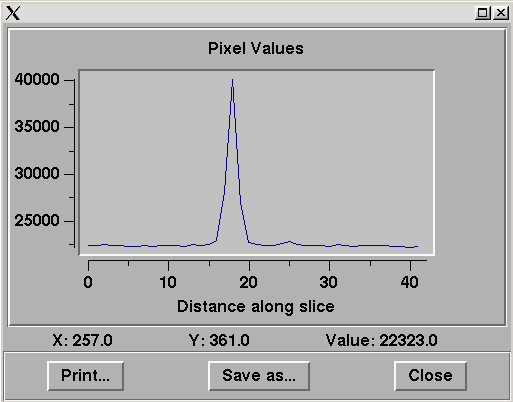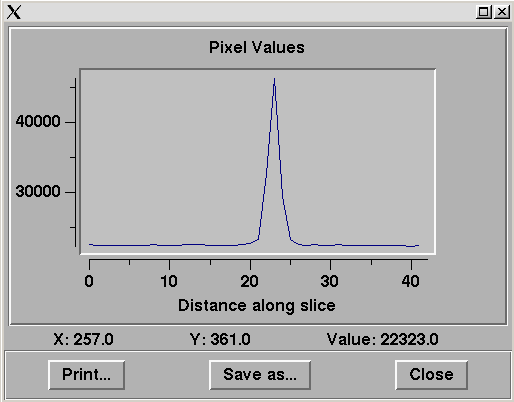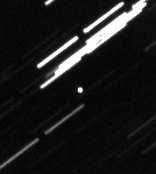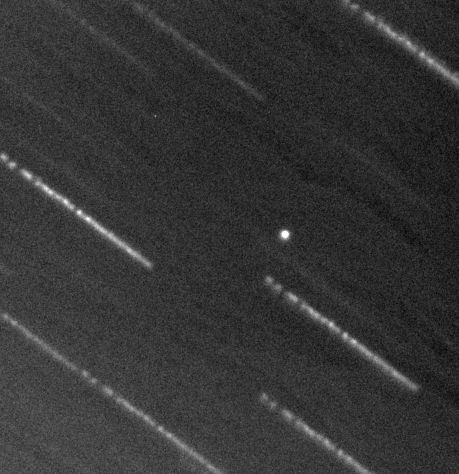Dust Trail of a Dead Comet Phaethon
|
Japanese version Home page |
Updated on June 12, 2005 |
![]()
|
|
![]()
|
Period Mag. θ Ph r d TrM1 TrM2 ------------------------------------------------------- 1984 Dec. 14 - 16 13.1 3 29 1.21 0.27 17.5 18.7 1991 Dec. 22 - 2 16.9 3 28 1.76 1.04 18.3 19.5 1994 Dec. 14 - 19 14.5 0 27 1.36 0.45 16.2 17.5 2004 Dec. 15 - 22 15.3 0 26 1.49 0.62 16.3 17.5 |
Period: When the angle between the view direction from the Earth to
Phaethon and the direction of Phaeton's orbit (θ) becomes
smaller than 5 degree.
Mag. : Phaethon's magnitude at the minimum angle.
θ : The minimum angle during the period.
Ph : Phase angle at the minimum angle.
r : Heliocentric distance at the minimum angle.
d : Geocentric distance at the minimum angle.
TrM1 : Surface brightness of dust trail.
TrM2 : Surface brightness of dust trail, including phase angle effect.
|
The surface brightness of dust trail in the table is calculated assuming the dust trail looks 20 mag at 1 AU from the Sun in the direction of θ = 90 degree.
In 1984 December, no observations were reported. In 1991 December, only one observation was reported on Jan. 1. In 1994 December, 4 nights observations from 3 observatories were reported.
The dust trail became brightest in 1994 December. But there was a full moon at that time, so the condition was bad to detect the faint dust trail. The dust trail in 2004 will be as bright as in 1994. Although there is a crescent moon in 2004, the condition is better than in 1994.
The observational condition in 2004 December is as follows. The sets of the best time of observation and the altitude of Phaethon at latitude 35 degree in the Northern/Sothern Hemisphere are displayed.
Date R.A. Dec. Mag. TrM1 TrM2 Lat.35N deg Lat.35S deg
---------------------------------------------------------------------
Dec. 15 2 45.35 31 46.4 15.3 18.2 19.3 21:05 (86) 21:05 (24)
16 2 40.28 31 9.2 15.3 17.8 19.0 20:56 (86) 20:57 (24)
17 2 35.30 30 31.1 15.3 17.2 18.4 20:47 (85) 20:57 (25)
18 2 30.42 29 52.0 15.3 16.3 17.5 20:38 (85) 20:58 (25)
19 2 25.65 29 12.2 15.3 16.8 18.1 20:30 (84) 20:59 (26)
20 2 20.98 28 31.6 15.4 17.5 18.8 20:21 (83) 20:59 (26)
21 2 16.43 27 50.5 15.4 18.0 19.3 20:13 (83) 21:00 (26)
22 2 12.00 27 8.9 15.4 18.3 19.6 20:04 (82) 21:01 (27)
|
![]()
|
![]()
|
![]()
